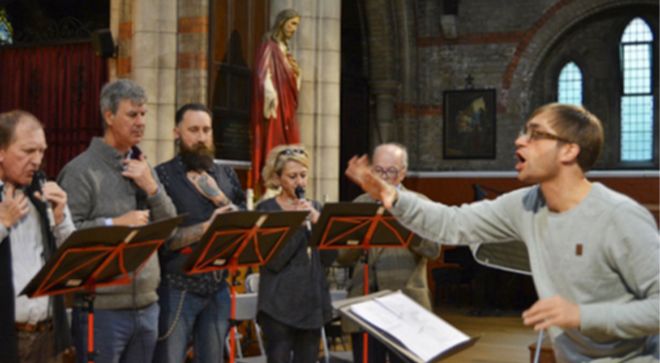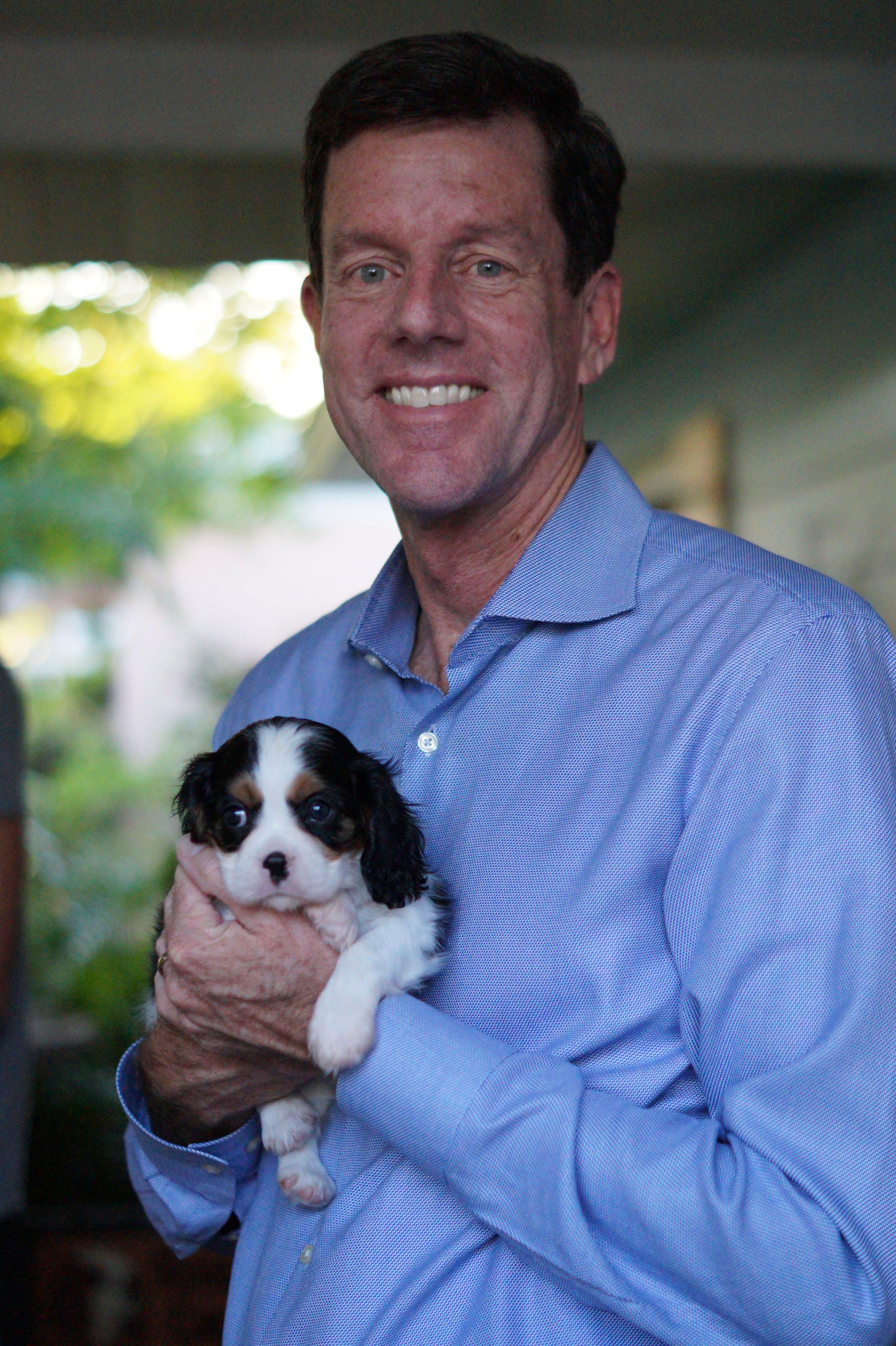Article
Regaining Their Voice: A Cancer Choir Finds Healing Together
Author(s):
A laryngectomy choir offers rehabilitation and inspiration to patients after throat cancer.
Sara sensed that the sore throat she experienced in 2011 was more than a garden-variety ailment and spent several months trying to get her general practitioner to recognize that, too. Later that year, Sara’s suspicion was confirmed: She learned that she had throat cancer.
In 2012, to get rid of the disease, she underwent a laryngectomy, a radical surgery to remove the larynx, the portion of the throat that houses the vocal cords.
To help rebuild her voice, Sara joined rehabilitation classes at her hospital. “I went along to these to learn breathing techniques to help improve my speech, which really helped,” says Sara, who lives in the United Kingdom.
From the class emerged a choir made up of cancer survivors who lost their voices to the disease. Sara was among the first of three to join, which she says helped her regain confidence. Then she experienced complications and lost her voice again for two years. She sunk into a depression, feeling isolated because no one understood the emotions she was trying to process. She was fitted for a voice prosthesis, a plastic device placed between the esophagus and the trachea, and found new hope with the choir, now 10 members strong.
Thomas Moors, a junior ear, nose and throat doctor with a special interest in voice pathology, serves as director of the UK-based Shout at Cancer choir. “I always wanted to combine both interests in music and medicine, so when I first read about the operation and the change in voice, I wondered: Would singing techniques help?” he says. “So, I started with organizing sessions with singing — a few brave signed up — then we added acting techniques to the workshops.”
Four years after their first performance, the choir continues to sing at prestigious venues, such as the Belgian Embassy and the Victoria and Albert Museum in London.
Their journey is highlighted in the documentary “Can You Hear My Voice?” which follows the choir as they prepare for their most ambitious concert yet: a sold-out performance at the Tabernacle, a historic theater in London. The film was produced and directed by award-winning documentarian Bill Brummel, his first project since having his own voice box removed.

THE SEED IS PLANTED
In 1997, Brummel learned he had tonsil cancer that had spread to his lymph nodes. Then 41 years old, the married father underwent surgery and aggressive radiation treatment. He believed that cancer was behind him. But 10 years later, he started to feel the effects of radiation as the muscles in his neck tightened. The symptoms worsened as the years went on, and he developed new issues, such as labored breathing. His doctor recommended a laryngectomy. “I was in denial,” Brummel recalls. “I just couldn’t imagine what life would be like without a voice and living with a hole in my neck.”
In 2016, he decided that laryngectomy was his best option. That March he had the procedure done and didn’t speak a word for the next three months. “Aside from the physical side effects, I was rattled with insecurity, fear and doubt,” Brummel says. “I found it easier to isolate myself.”
About a year later, his surgeon, Dr. Uttam Sinha of Keck Medicine of University of Southern California, suggested he make a film that delves into the psychosocial aspects of laryngectomy.
“Dr. Sinha planted the seed,” says Brummel, whose subsequent research quickly led to the Shout at Cancer choir. Brummel got Moors on board and spent the next six months developing a concept, writing proposals and raising funds. Then he headed to London to meet with everyone.
The documentary follows several choir members, including Sara, as they reflect on life as a laryngectomee and how their lack of a voice box affects them and their families. They also discuss the importance of finding the choir.
Singing, acting and beatboxing, all part of the program, help improve speech outcomes. For instance, breathing and singing techniques help control the voice and explore its pitch, Moors says. “The acting focuses on intonation and body language, and beatboxing helps with articulation and pronunciation,” he adds.
Moors is joined by a team of doctors, speech and language therapists, researchers, singers and actors who work closely together to help rehabilitate those who have undergone the life-altering surgery. The choir aids more than just the physical recovery, however. The members find a sense of community and belonging as they are welcomed by fellow laryngectomees to create uplifting music. The social aspect targets two common emotional side effects of laryngectomy: low mood and social isolation.
“The group sessions and now the choir have helped me tremendously with regaining my confidence, giving me a sense of achievement, as the improvement in my voice and speech is brilliant,” Sara says. The film features two of her poems, “Can You Hear My Voice?” and “Can You Hear My Silence?”
Sara also used her talent to tweak the lyrics to Nina Simone’s “Ain’t Got No, I Got Life,” making them more personal to someone who has undergone laryngectomy. The song is one of many featured during the film’s live performance, which Brummel also joined in.
PERSISTENCE PAYS OFF
After two-and-a-half years of fundraising, production and editing, Brummel completed the film in December 2019. There was a virtual screening in June at the International Association of Laryngectomees online conference, with more screenings being planned as well. Eventually, Brummel says, it will be made available to laryngectomees worldwide, thanks to majority sponsor Atos Medical, the global leader in manufacturing laryngectomy supplies. Four other sponsors are also helping the effort, including the Thyroid, Head and Neck Cancer Foundation.
In the powerful opening scene, Paul “Pug” Halliday cleans his voice prosthesis and examines the hole in his neck. From that moment, viewers are thrust into a world unknown to most.
“Although they all had the same operation, they each deal with it in a different way,” Moors says. “But despite their differences, they are a tremendously tight group when they are together. We’ve all become very close, and it’s pure joy when we are working toward our goal or just simply spending time together. They are courageous, and their optimism is contagious.”
A laryngectomy can leave patients physically and emotionally scarred, Brummel says. “But even though it’s dark, overwhelming and scary, the challenges and the disability need not defeat us. Every member of choir makes that self-evident.”
Each member achieved what many thought impossible: They fought back with what was taken from them, according to Moors. “They made people listen to their story. They managed to get positive attention to a small and scattered group that had been relatively overlooked,” he says. “What I hope people take from this is that they did all this in an attractive and constructive way. They managed to make ears warm in the science, research and medical world, and they have inspired many people who have to overcome adversity in their life.”
For those trying to find the new normal after laryngectomy, hope is not lost. “It may not be all plain sailing... however, I’m still here,” Sara says. “My voice is back better than ever, and I am more determined now than ever before. The choir has given me a new lease on life.”





